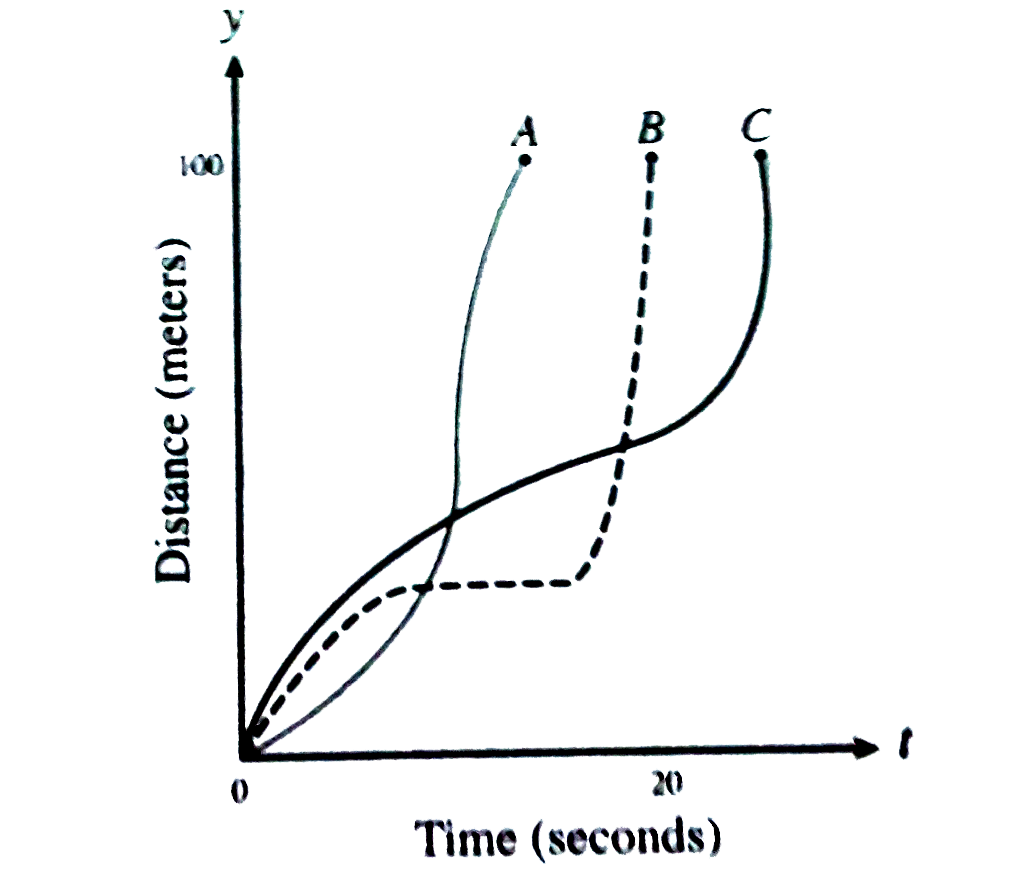Long distance, competitve runners are usually small and wiry and run more slowly than sprinters, who run much shorter distances and generally have a loarger bulk of nuscles. Which of the following best explains the differences between the two types of runners?
Long distance runners run more slowly because lactic acid quickly builds up in muscels and causes fatigue. Sprinters increase the oxygen supply to each muscle, enough for lactic acid to build up in their muscles.
The large muscels of sprinters increase the oxygen supply to each muscle, preventing lactic acid from forming.
Sprinters do not run for long enough for sufficient lactic acid to build up in their muscles therefore they can have large muscles for more power. By being lighter and running more slowly long distance runners ensure that their muscles receive enough oxygen for aerobic respiration.
sprinters run faster because their large muscles have more blood running through them to stop anaerobic respiration from taking place. Long distance runners run more slowly because they are using the energy from anaerobic respiration, which does not produce as much ATP as aerobic respiration.
The correct Answer is:C
Step by step video, text & image solution for Long distance, competitve runners are usually small and wiry and run more slowly than sprinters, who run much shorter distances and generally have a loarger bulk of nuscles. Which of the following best explains the differences between the two types of runners? by Biology experts to help you in doubts & scoring excellent marks in Class 11 exams.
Related Playlists
- BOOK - NCERT FINGERTPS ENGLISHCHAPTER - LOCOMOTION AND MOVEMENTEXERCISE - Locomotion And Movement139videos
LOCOMOTION AND MOVEMENT
- BOOK - NCERT FINGERTPS ENGLISHCHAPTER - EXCRETORY PRODUCTS AND THEIR ELIMINATIONEXERCISE - Excretory Products And Their Elimination133videos
EXCRETORY PRODUCTS AND THEIR ELIMINATION
- BOOK - NCERT FINGERTPS ENGLISHCHAPTER - MINERAL NUTRITIONEXERCISE - Mineral Nutrition130videos
MINERAL NUTRITION
Similar Questions
Read the following statements and select the correct option.
Statement 1: Locomotion is the movement of an indvidual from one place to another.
Statement 2: All movents are locomotions are but all locomotions are not movements .01:11View SolutionWhich of the following is the most toxic excretory product?
03:36View SolutionThe technique of hydroponics was first demonstated by
01:33View SolutionA की दौड़ने की गति B से तेज है , परन्तु C की तुलना में कम | C की गति D से कम है इनमे सबसे तेज धावक कौन है ?
02:01View Solution
Three runners complete in a 100-meter obstacle race. The graph above depicts the distance run as a function of time for each runner . Which is not a valid conclusion ?05:41View Solutionধাবক ও বত্রুধাবক এর পার্থক্য লেখো।
01:33View SolutionTwo runners are running in a race in the same direction at 7 m/s and 5 m/s respectively, the velocity of the first runner with respect to the second will be.
04:59View Solutionलम्बी दूरी वाले प्रतिस्पर्धात्मक धावक प्रायः छोटे व मजबूत होते हैं और तेज धावकों की अपेक्षा अधिक धीरे दौड़ते हैं, जो अपेक्षाकृत कम दूरियां तय करते हैं और साधारणतया उनमें पेशियों का एक बड़ा समूह होता है। निम्न में से कौन-सा कथन दोनों प्रकार के धावकों के बीच अन्तर स्पष्ट करता है?
03:16View Solutionধাবক ও বত্রুধাবক এর পার্থক্য লেখো।
02:20View SolutionIn a 100 m race, there is a distance of 1 m at the midpoint of the race distance between the first and second runners. Suppose the first runner continues to run at the same speed, then what percentage of the second runner will have to increase his speed to win the race?
03:23View Solutionएक धावक 800 मी की दूरी 2 मिनट में तय करता है तथा दूसरा धावक इतनी ही दूरी 4 मिनट में तय करता है, दोनों धावकों द्वारा किया गया कार्य
03:30View Solutionएक धावक 800 मी की दुरी 2 मिनट में तय करता है तथा दूसरा धावक इतनी ही दुरी 4 मिनट में तय करता है, दोनों धावकों द्वारा किया गया कार्य
04:41View SolutionThree runners A,B and C run a race, with runner A finishing 12 meters ahead of runner B and 18 meters ahead of runner C, while runner B finishes 8 meters ahead of runner C. Each runner travels the entire distance at a constant speed. The length of the race is:
01:20View SolutionWrite the locus of a runner running around a circular track and always keeping a distance of 1.5 m from the inner edge.
04:08View SolutionA runner starts from the bucket, picks up the nearest ball, runs back with it, drops it in the bucket, runs back to pick up the next ball, runs to the bucket to drop it in, and she continues in the same way until all the balls are in the bucket. What is the total distance the runner has to run?
02:17View SolutionA runs faster than B but not as fast as C who is slower than D. Who is the fastest runner?
02:36View Solution


